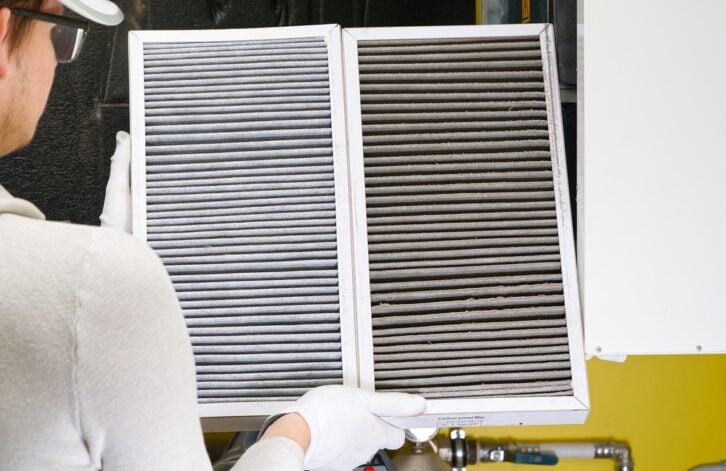Real estate markets reward surface polish. Buyers admire finishes, fixtures, and the curated life promised by a listing. Yet behind the walls and under the floors are systems that can quietly undermine the investment. Plumbing and HVAC rarely appear in glossy brochures but they carry the power to define both comfort and cost.
Why Systems Matter More Than Staging
The fundamentals of a property go beyond its square footage or the neighborhood it sits in. They exist in the unseen infrastructure.
Plumbing as Silent Risk
Water damage does not announce itself with open-house charm. It creeps through pipes, behind drywall, and under flooring. Corroded lines, compromised sewer connections, or neglected water heaters can turn a purchase into a liability.
HVAC and Long-Term Comfort
Heating and cooling systems set the standard for daily livability. An undersized unit or a furnace on its last legs creates costs that compound every month in higher energy bills. They also affect resale value, since no buyer is eager to inherit outdated equipment.
The Numbers That Buyers Ignore
Most buyers calculate affordability in terms of mortgage payments, insurance, and taxes. Rarely do they build plumbing or HVAC replacement costs into their budgets.
Typical Replacement Ranges
- Sewer line replacement often runs between $5,000 and $20,000
- Whole-house repiping can cost $8,000 to $15,000
- Furnaces are replaced at an average cost of $3,500 to $7,500
- Central air units range from $4,000 to $8,000
These numbers are not theoretical. They are drawn from real service invoices that blindside new owners.
How Problems Multiply
A leaking water heater may ruin flooring. Poor ventilation may shorten the life span of multiple HVAC components. Neglect has a way of spreading costs across the entire property.
Why Standard Inspections Fall Short
Home inspections give an overview, not a guarantee. They are designed to spot visible risks but rarely uncover hidden ones.
Plumbing Beyond the Surface
Inspectors will run faucets and check drainage. They do not cut into walls to examine pipe integrity. That leaves buyers exposed to failures that emerge only after moving in.
HVAC Checks Without Depth
Most inspectors verify that systems turn on and off. Few measure efficiency or test performance under seasonal stress. An air conditioner that runs in spring might fail during the first summer heatwave.
What Smart Buyers Do Differently
Buyers who treat a home as an investment rather than an impulse extend their diligence beyond general inspections.
Asking Precise Questions
- What is the age of the water heater, furnace, and air conditioner
- When were they last serviced
- Are warranties transferable
- Has the home ever experienced water damage or sewer backups
Hiring Specialized Evaluations
Engaging professional services for deeper checks is a modest investment compared to potential repair costs. Companies offering plumbing and HVAC solutions provide evaluations that go beyond surface inspections and identify issues before they turn into expensive surprises.
The Role of Plumbing and HVAC in Negotiations
Information about system condition strengthens a buyer’s position.
Price Leverage
Discovering that major systems are near the end of their life cycle gives buyers the ability to negotiate price reductions or credits. Sellers often prefer to lower asking prices rather than face repair demands.
Repairs as a Condition of Sale
Some buyers secure replacements or repairs before closing. A seller willing to absorb the cost of a furnace or water heater replacement eliminates risk for the buyer.
Protecting Long-Term Value
A house with modern, reliable systems is easier to maintain and easier to sell.
Future Resale Position
Prospective buyers will ask the same questions. Homes with documented system upgrades hold value better than those that pass problems down the line.
Everyday Livability
Beyond investment, comfort is practical. Consistent heating, cooling, and water supply affect daily life more than cosmetic features. A dream kitchen loses its shine if water pressure drops every time the dishwasher runs.
Warning Signs to Watch During Showings
Even before hiring specialists, buyers can identify potential risks by paying closer attention during initial visits.
In Basements and Utility Rooms
- Evidence of water stains on walls or floors
- Visible rust or corrosion on pipes
- Sump pumps that look old or neglected
In Bathrooms and Kitchens
- Discolored water
- Weak pressure from faucets or showers
- Drains that back up or empty slowly
Around Heating and Cooling Units
- Loud or irregular noises from equipment
- Rust on the exterior of units
- Missing service records or tags
While not conclusive, these observations should prompt further inspection.
Why This Matters for Market Analysis
PropertyWire readers approach real estate through both financial and operational lenses. Systems that buyers often overlook shape long-term performance. Reliable infrastructure preserves capital. Neglected systems erode it.
Investors who factor plumbing and HVAC into due diligence reduce exposure to sudden repair costs and improve rental and resale prospects. For end users, the same diligence translates into predictable living expenses and fewer emergencies.
Final Word
In a competitive market, it is tempting to focus on presentation. Staging hides flaws. Brochures celebrate the visible. Yet the real cost of ownership is decided by what cannot be seen at first glance.
Plumbing and HVAC are not decorative. They are structural in financial and practical terms. Overlooking them is not optimism. It is oversight.






